Mount Fuji is without a doubt the icon of Japan. Everyone, foreign tourists as well as Japanese locals, want to see it at least once in their lifetime. If we can see it by chance, we are all attracted by its elegant and imposing silhouette. Let us show you the different faces of Mt Fuji in beautiful pictures taken from various vantage points in the environment of the mountain.
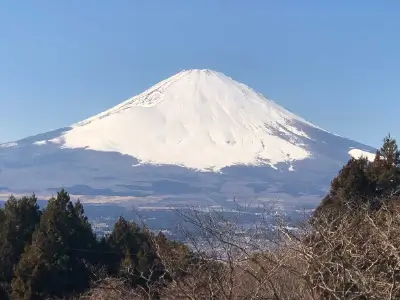
Information About Mt Fuji
Mount Fuji, called Fuji-san in Japanese (富士山, literally mount Fuji) has always attracted the admiration of Japanese people. Since ancient times, it has been the artistic object of many Japanese painters (such as the great painter of Ukiyo-e, Katsushika Hokusai) and also Japanese writers. And in addition to that, this elegant mountain has also been the object of the Shinto religion as a sacred mountain. That is why when Mount Fuji was chosen as a UNESCO World Heritage Site in 2013, it was inscribed under the title of “Fujisan, Sacred Place and Source of Artistic Inspiration”.
It is the highest mountain in Japan at 3,776m, straddling the prefectures of Yamanashi and Shizuoka. Born about 25,000 years ago, there have been 17 eruptions to take this present form. The last big eruption took place in 1707, but this volcanic mountain is still considered to be active and studies on its volcanic activity are always being conducted. This is especially important since it is located only 100km from Tokyo! By the way, after the great earthquake of 2011 in northeast Japan, we have recorded some volcanic movements at Mt. Fuji.
The Seasons of Mt Fuji
We can climb Mount Fuji only in July and August because the snow starts to fall towards the end of September and stays there until June. The mountain hut and the service along the trail leading to the top of Fuji are only open during this period. If you want to see the rising sun from the top of Mount Fuji, start in the afternoon, and spend the night in one of the huts near the summit. You can do the rest of the ascent while the sky is still dark. The other option is to climb at night, the trail is well-traveled and hard to miss, especially since there will be a continuous line of people on the trail.
The opening dates of the mountain depend on the year. Every year, the first snow cover at the top of Mount Fuji is announced in the news.
Mt Fuji ‘s Five Lakes
The 5 lakes of Mount Fuji, formed by the eruptions of the latter, are components of the “Fujisan, sacred place and source of artistic inspiration”. These 5 lakes, from the largest to the smallest, are Yamanaka-ko Lake, Kawaguchi-ko Lake, Motosu-ko Lake, Sai-ko Lake, and Shojin-ko Lake.
As they are located not far from Mt. Fuji, we would think that they are fed by water from the snowmelt of Mt. Fuji, but this is not the case. It is rainwater, spring water, and snowmelt water from the surrounding area that feeds these lakes. Moreover, Yamanaka-ko Lake is the only lake among these 5 that has an outlet, that is, a river that goes into the Pacific Ocean. Other lakes do not have it and the water evaporates naturally.
From each lake, we can observe Mt Fuji but perhaps it is from the lake of Kawaguchi-ko that we can admire the most beautiful shape of Mt Fuji because we can see up to its “skirt”.
The Different Faces of Mount Fuji
As Japan is a very humid country, we can see Mount Fuji only 20% of the year. We are most likely to see it entirely when it is less humid, that is to say in winter (between December and February). So even Japanese people, when we can see it, will take out their camera or iPhone to take a picture of it. When we imagine its silhouette, Mount Fuji always wears a snow white hat, and in summer he takes off his hat. So if you want to see Mount Fuji with his white hat on, we advise you to come to Japan in winter or early spring.
Finally, as it is the highest mountain in Japan, we can see it from everywhere. But its shape is different depending on where you see it from. Enjoy these pictures I took from various vantage points when I was traveling with foreign tourists!
From Kawaguchiko
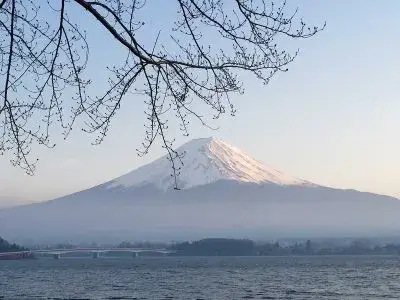


Among the 5 lakes of Mount Fuji, Kawaguchiko Lake offers more activities for tourists with many festivals organized according to the season. We can go for a walk on the lake, visit museums and spend the night in a hotel or ryokan while admiring Mount Fuji maybe from your room window.
From Mount Kachikachi-yama
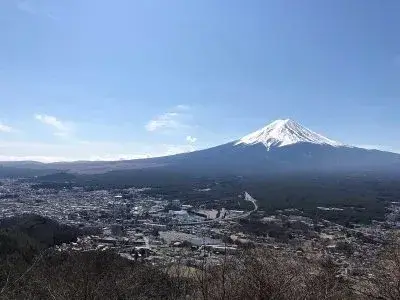

It is perhaps from here that we have the most beautiful view of Mount Fuji (of course when the sky is clear). We are really in front of it.
From Yamanakako and Saiko
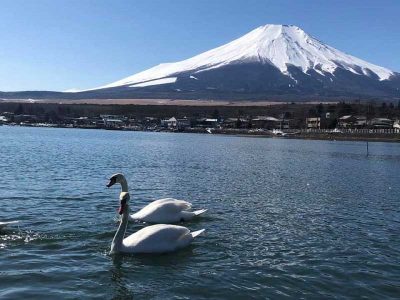
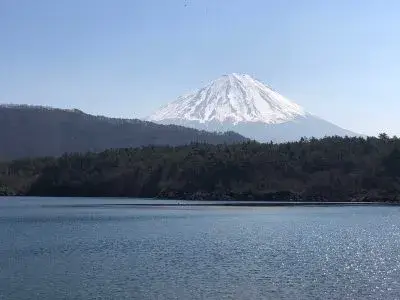

Yamanaka-ko Lake is located further east among the 5 lakes of Mount Fuji. In winter, swans come and spend time here.
Mt Fuji from Gotemba

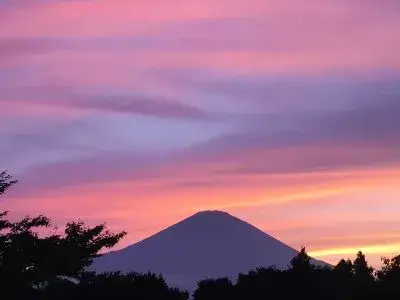
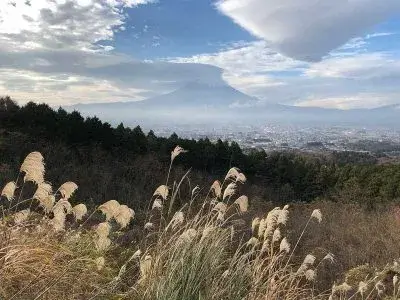
The city of Gotemba is located at the foot of Mount Fuji and there is a big Fujikyu amusement park and also a big outlet where we can go shopping while admiring Mount Fuji.
From Oshino Hakkai and Arakurayama Sengen Park


These 2 places are not next to each other but you can access both from Kawaguchiko. The photo of Mount Fuji with the pagoda taken at Arakurayama Sengen Park is often used on commercial posters of Japan (in spring cherry blossoms prettify the view). In Oshino Hakkai, there are 8 small ponds which are fed by the water from the melting snow of Mount Fuji and the water transparency is unprecedented.
From Ashino-ko Lake (Hakone)

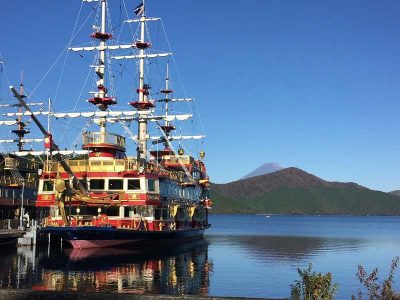
Ashino-ko Lake is located at 700m altitude in the region of Hakone. Hakone is easily accessible from Tokyo but we can see Mount Fuji quite rarely. But when we can see it, it’s just beautiful.
Mt Fuji From the Highway and Shinkansen
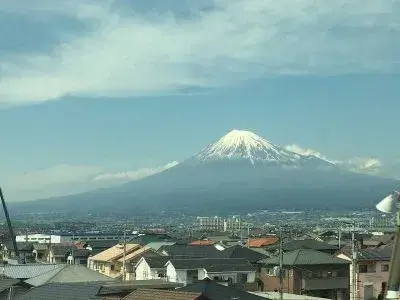


When you take the shinkansen between Kyoto and Tokyo, you can see Mount Fuji through the window of your train (from Tokyo, it’s on the right-hand side). On the way to Kawaguchiko, you can also see it through your window.
From Mount Fuji’s 5th station
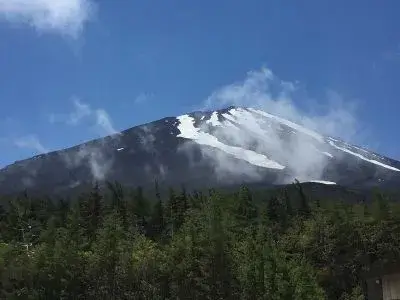

We can go by bus to the 5th station of Mount Fuji (the road is closed in winter for snow and even after it opens access is limited) and most hikers start their ascent from this 5th station located at 2305m altitude.
Mt Fuji From Mishima Skywalk

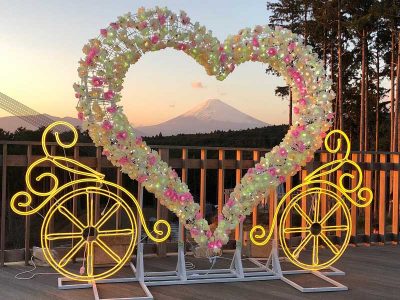
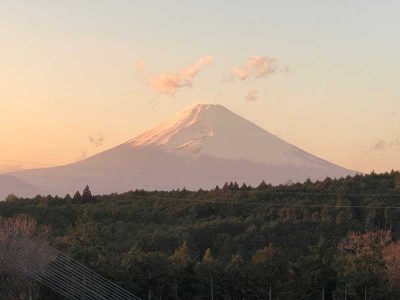
In Mishima, to take full advantage of the view of Mount Fuji, a 400m long overhead bridge was installed, called the Mishima Skywalk. We can observe the most recent Hoei Crater, created by the eruption of 1707.
From Nihondaira
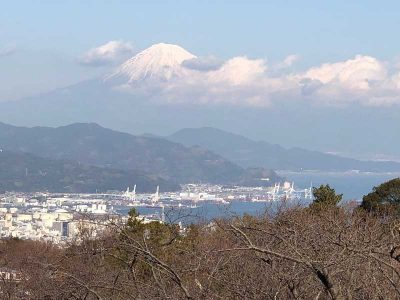
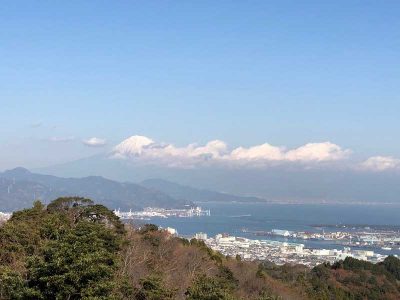
Nihon Daira is located in Shizuoka Prefecture and there is an observatory on Udoyama Mountain. From there, you have a beautiful view of Mount Fuji and Shimizu Bay. You can also visit the Kunozan Tosho-gu Shrine from here.
Mt Fuji From the Airplane

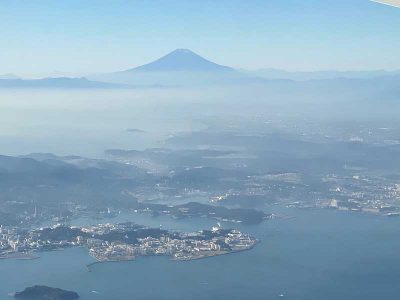

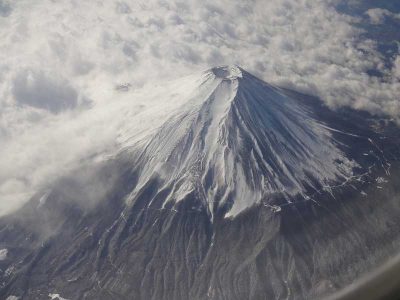
When we take the planes from Tokyo to the south of Japan, during good weather we can see Mount Fuji. From time to time only his head, but when the sky is clear, we can see up to his robe. The most spectacular view I had of Mount Fuji was when I could see its crater from the plane. This happened when I flew to Hiroshima from Tokyo. As the airway changed, it was the only time I could get that view.
So what are your favorite pictures? Thanks to my work as a guide, I had the opportunity to see it quite often. But still, every time I can see it, I am happy like foreign tourists who see it for the first time. It’s a magical mountain that always gives us the joy of being able to discover it.
Your Japan Tour
As seasoned Japan experts, we create perfect Japan package tours including destinations like Mt Fuji. Check out our group tours< and private tours, or contact us to start planning your unforgettable holiday to this fascinating country full of once-in-a-lifetime experiences, culture, history, nature, and delicious food!